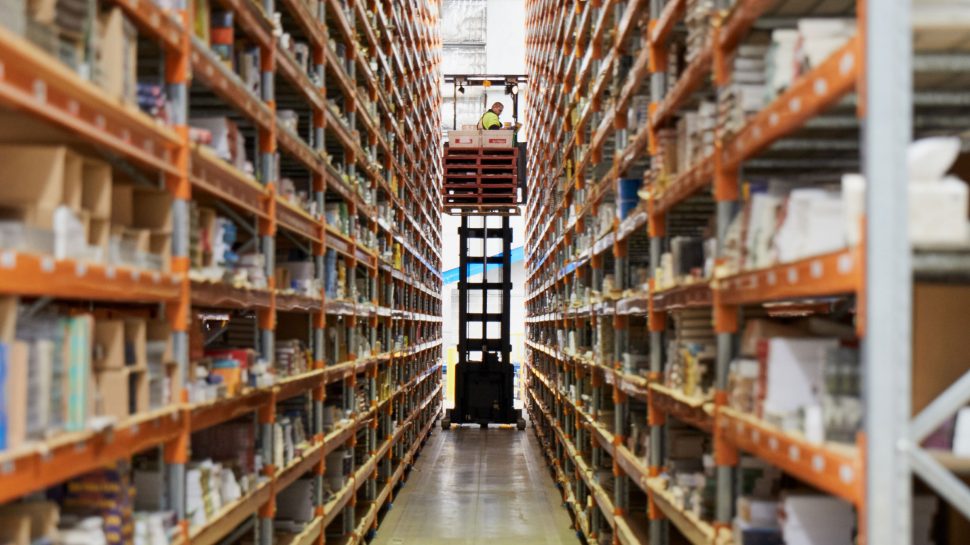Why supply chain improvements start with the customer
Delivery certainty and visibility are now baseline expectations, and customers are expecting more from every touchpoint in their eCommerce transactions – from point of purchase to the door. Australia Post Supply Chain Consultant Ching Ooi shares three levers you can pull to prioritise customer experience across your supply chain.

Key points
- Physical logistics and supply chain decisions impact every customer experience touchpoint from the moment of purchase.
- By taking ownership of the end-to-end supply chain, you can find ways to optimise fulfilment and delivery, while also meeting (or even exceeding) customer expectations.
- You can find ways to connect store, distribution centre and supply chain partner systems; adjust fulfilment algorithms; and be ready to flex your model for future changes.
After a customer checks out with an online purchase, the moments that matter most in their shopping experience take place offline. From that point on, every aspect of your physical supply chain is working towards fulfilling that customer promise – from inbound distribution to your final mile delivery partner.
And today’s customers increasingly expect more from that experience – beyond simply receiving their item in the promised time. Following phenomenal eCommerce growth in 2020,1 retailers are now focusing on opportunities to provide a more personalised and seamless experience across multiple channels. That may include a clear, simple checkout, an easier returns process or giving shoppers more delivery options – including speed and drop-off point.
With more customers shopping online than ever before, it’s time to take control of the end-to-end purchase journey.
For me, the first step in a supply chain consultancy engagement is defining your customer promise. What do you want their experience to be?
From there we can work backwards, to make sure every aspect of your supply chain can meet those expectations. In the process, we can also find ways to optimise processes and help save on delivery costs – and look for opportunities to resolve pain points and roadblocks.
Owning the end-to-end experience
In Australia Post’s 2021 eCommerce Industry Report Inside Australian Online Shopping, Super Retail Group General Manager of Omni Fulfilment Ethan Orsini says customers expect them to be accountable for any problems that arise with their order.
“Previously, there was a temptation to think that, once an order was picked, packed and with the courier, our job was done. Now we recognise we have to own the full end-to-end experience. Customers want to know they're not just a number to us.”
In our recent white paper with Deloitte,2 we defined the end-to-end experience as a way to identify potential supply chain risks. This framework can also be used to improve customer experience – and it involves taking a whole view, inbound and outbound.
For example, if an online sales event spike means packers can’t keep pace with stock pickers, this could in turn impact parcel collection times. But there might not be enough products to pack if you don’t have sourcing visibility, with direct access to supplier stock levels.
So how can you bring all these elements of the supply chain together? Here are three levers you can pull to make a positive impact on customer experience.
1. Connect siloed systems to enhance stock visibility between stores and DCs
If your customer experience expectations include next-day delivery in certain areas, you’ll need real-time stock visibility to work out the best location to ship from. Only then can you make that promise with confidence.
If you fulfil from stores as well as distribution centres, they all need access to a real time, integrated inventory management system. Often we see businesses working with legacy systems, and they just don’t have the agility to respond at scale when the marketing team decides to launch a flash sale to move inventory. Systems can be even more fragmented in businesses with franchised models, and more complex if you also want to offer a ‘click and collect’ option to customers.
It’s also important to ensure systems connect with third party providers – for example, you need accurate data flow from your marketplace or eCommerce platform through to the manifest to avoid re-keying address details.
2. Establish fulfilment rules to balance the need for speed with cost-effective delivery
During our consulting process, we sometimes challenge the logic behind existing online fulfilment algorithms. In doing so, you could rebalance delivery speed and cost – because there are times when that next-day delivery promise may simply be uneconomical.
Freight optimisation rules can help you save a significant amount on shipping costs over time, without necessarily compromising on customer experience. The key is knowing what customers are prepared to pay for, and what they really need. For example, if the purchase is a gift and they really do need it overnight, they’ll be grateful to have the option to pay a little more for express shipping.
This is something Super Retail Group has also been focusing on.1 “We’ve been working with Australia Post to make sure we're aligned, so we don't fulfil from say, Sydney, when it would be quicker from Brisbane,” says Ethan. “We're working together on a network plan that will lead to a more customer-centric and efficient outcome.”
3. Embed future flexibility to adapt to new tech enhancements
Flexibility is one of the four pillars underpinning supply chain resilience.2 A flexible supply chain lets you scale up and down to market demand, and adapt to unexpected changes. It can also help you take advantage of the latest tech and service developments to continually improve your customer experience.
For example, to make the most of Australia Post’s On Demand and twilight/weekend delivery window,3 your fulfilment platforms will need to be able to prioritise and escalate orders. As notification windows become even more granular, your customer communication channels may need to be more responsive. Australia Post is currently trialling delivery window SMS notifications on the day of delivery to give customers even greater certainty over parcel delivery time, because our data shows when customers feel more in control with timely tracking notifications, the volume of call centre queries declines significantly.
In the future, it’s likely the lines between online and offline channels could become even more blurred – making that seamless handoff even more important. Digital-first eCommerce brands are using pop-ups in physical spaces to create awareness.4 Chinese retailers have already mastered ‘same hour’ delivery within top tier cities5 – which effectively means a customer could be shopping in a physical store, buy online from their mobile device, and have the parcel delivered to their apartment concierge before they get home.
Is your supply chain ready for this omnichannel future? While the promise of automation, algorithms and data is exciting, it’s still important to maintain that human touch. That is the core of your customer experience.
To ‘surprise and delight’, making a genuine connection could mean more than faster delivery. Things like personalised product suggestions and sending a handwritten note with the parcel. Or tailoring notifications based on their preferences and profile and taking ownership when there’s a problem. These all can make every aspect easier and more enjoyable for customers.
The more people shop online, the more they are likely to expect from the experience. Continually look for ways to meet and exceed their expectations by adjusting these levers across your supply chain. By starting with your ideal customer experience, you can work backwards to connect every logistical aspect to make it happen.
Recommended reading

Sustainability and supporting people, the economy and the environment
This article is provided for general information purposes only and is not intended to be specific advice for your business needs.
1 Inside Australian Online Shopping, eCommerce Industry Report 2021 Australia Post
2 Supply Chain Resilience Building confidence through a risk intelligent approach to supply chain management, Deloitte and Australia Post 2020
3 On Demand services are only available to selected merchants. On Demand services are available to consumers within specified geographical areas of Sydney, Melbourne, Adelaide, Perth and Brisbane provided that the merchant’s point of dispatch is within specified geographical areas in the same city. On Demand services are not available for pick-up or delivery on public holidays or Sundays. On Demand services are subject to the terms and conditions at auspost.com.au/ondemandterms-conditions and the locations for the services, which may be updated at our discretion is available at auspost.com.au/ondemandnetwork.
4 Why the new hybrid offline and online shopping model will supercharge retail in 2021, B&T, November 23 2020
5 eCommerce in China and the (present) future of how the world shops, Cameron Priest, August 11 2020, QuickBooks Commerce


